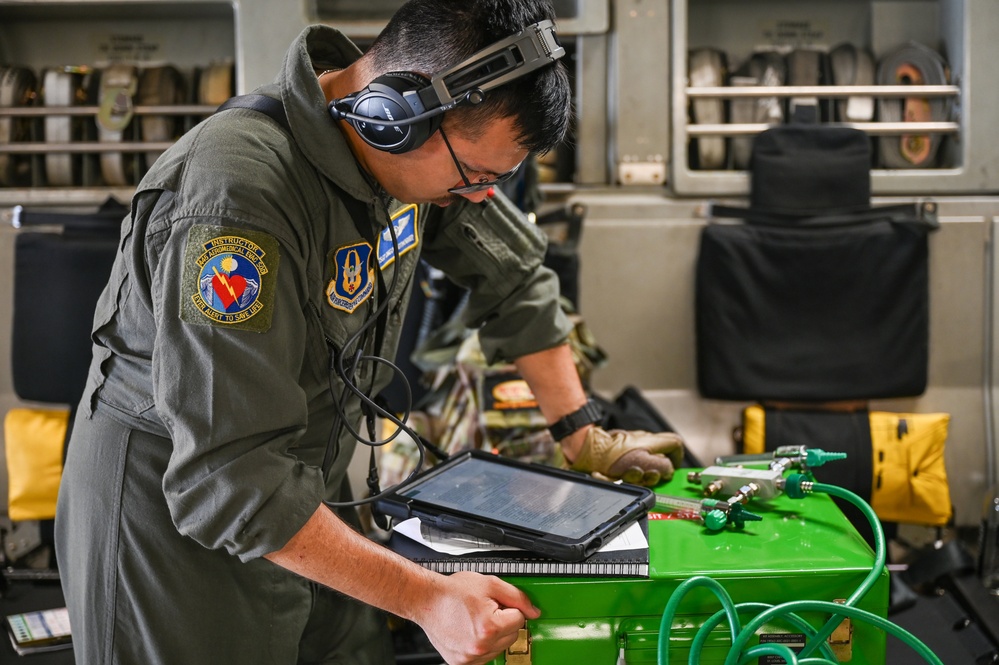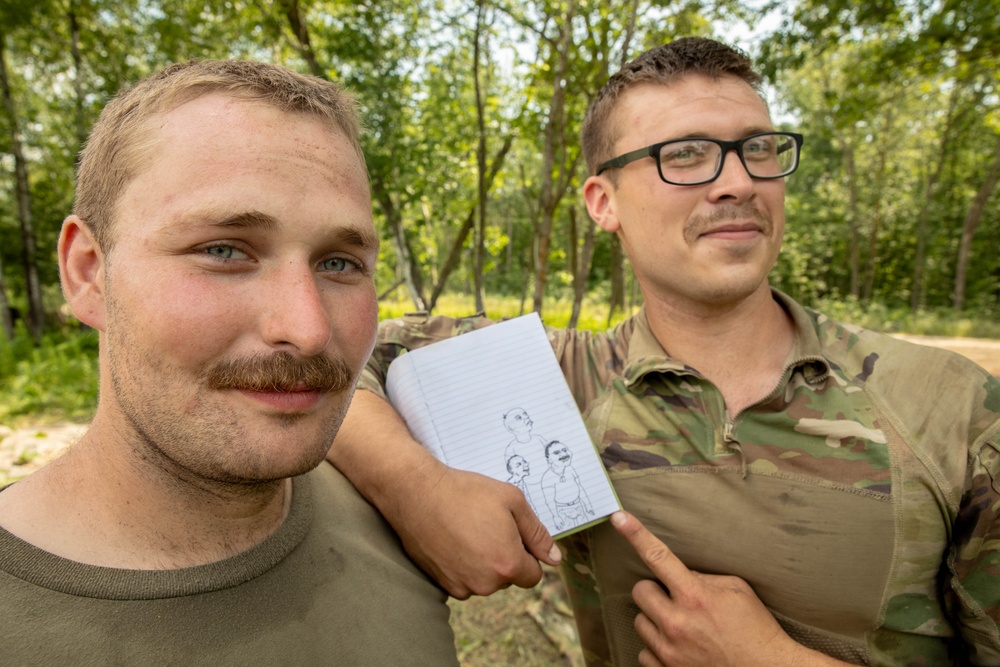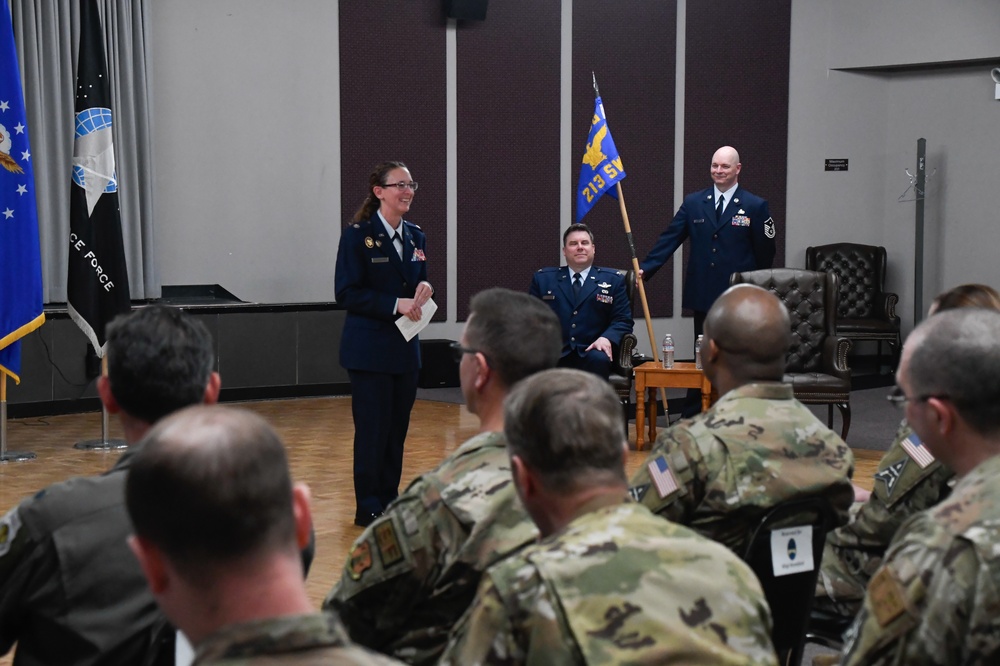DVIDS – News – 144th FW pilots, opportunities to fly in the ANG
The Reserves and the National Guard are often grouped together with the Active Duty in the minds of most Americans when they think “military,” so it’s not surprising that even active-duty service members are unaware of the opportunities that are present in the Air National Guard.
At the 144th Fighter Wing, a unit of the California National Guard, many of our pilots serve as bonafide military aviators, part-time, while also advancing their civilian careers. Even though their paths to fighter-pilot aviation vary–-some of our pilots started their military career in Active Duty and others began their in the ANG–-they have all come together at the 144th Fighter Wing as Drill Status Guardsmen, citizen Airmen, and military aviators.
The road to becoming a military aviator
U.S. Air Force Capt. Brandon “Magic” Bailey who has been with the 194th Fighter Squadron at the 144th Fighter Wing for just over a year, began his military career as a USAF active-duty pilot, flying the F-15E Strike Eagle. During his time on Active Duty, he served at Osan Air Base in South Korea and for the Euro-NATO Joint Jet Pilot Training program at Sheppard Air Force Base, Texas. After leaving active duty, Magic joined the Air Force Reserves before again transitioning to the ANG and joining the 144th FW.
“I finished my active duty career prior to separating and eventually joining the Air Force Reserves at March Air Reserve Base in Riverside, California.” said Magic. “After about three years, I had the opportunity of a lifetime to transition to the California Air National Guard to fly the mighty F-15C!”
Capt. Charles “Depot” Jamieson began his military pilot career with the 144th FW in October of 2014. He was a direct hire to the unit after completing the pilot board process and being selected by the squadron. He attended pilot training with the USAF and returned to the 144th FW once he completed it in 2017.
“I was what you’d call an ‘off-the-street’ hire,” said Depot. “I was a civilian charter pilot in Alaska with some good entry level aviation experience, but no military experience.”
Lt. Col. Christopher “Ranger” Corliss began his military career in the U.S. Army as a commissioned Infantry Officer and an Airborne Ranger. He had always wanted to be a fighter pilot but was medically disqualified because he had bad vision. In 2003, during a deployment to Afghanistan, he received some great news.
“I learned that the Air Force was waiving laser-eye surgery as a disqualifier for pilots, so then I asked guard units across the U.S. (about their application processes),” said Ranger. “And decided to earn my private pilot’s license so that I would be competitive.”
He already had received laser eye surgery, so upon his return, he paid for and earned his private pilot’s license. He then applied to become a pilot at the 194th FS, was chosen, and completed his undergraduate Pilot Training at Columbus AB, Mississippi.
Building a civilian career
Magic is a captain for American Airlines where he mostly flies the Airbus A321. Additionally, he serves as one of the Los Angeles Airport chief pilots for the airline. He says his military career has been a direct contributor to his success in his civilian career.
“My military experience is fundamental in my approach to my civilian job, especially serving as chief pilot when it comes to how I care for and serve the American Airlines pilot group,” Magic said.
Depot learned to fly in Anchorage, Alaska where he grew up. After graduating from the University of Michigan with a degree in Aerospace Engineering, he returned to Alaska and worked as a bush pilot.
Following his flight training with the U.S. Air Force, Depot moved to Fresno and was hired as a pilot for Federal Express. He takes pride in his position there and boasts many of their familiar slogans.
“I have been there a little over two years,” said Depot. “We fly a large fleet of freighter planes filled with high priority cargo around the globe, delivering ‘The World on Time.’”
Depot also credits his military experience with making him better at his civilian career. He credits the foundational flying skills he received and his situational awareness training in the military with making him a better civilian pilot.
“The military also teaches and practices good ‘stick-and-rudder’ skills, which are the basics of how to fly an aircraft safely and properly,” added Depot. “Another one is energy management, which is how a fighter pilot exploits physics to get the advantage in a fight.”
While serving as a pilot in the Air National Guard, Ranger spent most of his time on a full-time employment status. He only worked as a traditional DSG for one year. During that year, he worked as a private corporate pilot, flying a Gulfstream 150. That same year he was later hired for a position as a pilot for United Airlines.
“I was interested in taking an ‘off ramp’ from full-time (Active Guard Reserve) orders to explore my options following military retirement,” Ranger said.
Ranger also credits his military flying experience and training for giving him more opportunities in the private sector.
“I would not have had the opportunity, skills, or flying hour requirements to pursue corporate aviation or the airline industry without my military experience,” said Ranger. “Flying for the military has given me the required 1500 hours of total flight time and other minimums, like instrument, night, and multi-engine flying time to meet the FAA’s requirements for an Airline Transport Pilot Certificate.”
Enhancing the military experience
Magic said that his career as a civilian airline pilot gives him perspective and makes him appreciate the unique opportunity that he has in the military. Many of his coworkers in the airline industry do not have military experience, so they are amazed by some of the things he has been able to do as a fighter pilot.
“I have always felt serving in the military, especially in a fighter squadron, is special,” said Magic. “However, I am even more cognizant of this fact.”
In his civilian career, Depot flies cross-country and internationally, which enhances his military flying experience. His experience helps him as a military project officer and as a deployment planner for overseas missions because he regularly encounters those variables.
“Although I have a significant amount of military international flying experience, it is good to refresh that monthly with an international trip as a civilian pilot.” said Depot. “I’ve gotten to know some of the general air traffic control procedures, political customs, and weather procedures in other countries mostly from civilian flying.”
Like our other pilots, Ranger agrees that his experience from his civilian positions have given him new perspectives, which make him even better in his military role. They have given him a new appreciation for the Airmen in his unit and the teamwork that they have in his squadron.
“Flying (privately) exposed me to filing my own flight plans, doing my own fuel planning, and weight and balance calculations, which have all given me appreciation for all of the support we get as military aviators.”
His experience as a DSG helped him to fully understand some of the obstacles that other DSG Airmen experience, so he is able to support guardsmen better as a leader.
“I got to appreciate that as a DSG, you have a minimum of ‘two bosses:’ your primary employer and the military,” said Ranger. “I found it challenging to meet all the demands of my position while trying to maintain my currencies, flying the F-15C, and completing my leadership responsibilities as a Field Grade Officer.”
Serving as a citizen Airman: the right fit
Magic lives in Los Angeles, which works best for his family and his career. He has the ability to live where he wants and fly as an airline pilot. Additionally, he is easily able to commute to Fresno, California to fly with the 144th FW, as a fighter pilot.
“Serving as a DSG is crucial to the continued progress of my civilian career,” said Magic. “Both careers work well together and being a DSG has given me the flexibility I need.”
After graduating from college, Depot decided that he wanted to become a fighter pilot, and the Air National Guard was the fastest way for him to achieve his dream.
“I’ve had a good time here at the fighter squadron and want to keep flying here as long as they let me,” said Depot. “I hope to continue in the squadron as well as fly the new F-15EX that’s on its way. You’ll hopefully be seeing me at the merge for quite some time!”
The merge is a traditional fighter squadron break room and is a location where members of the 194th Fighter Squadron spend time together and bond as a team.
For Ranger, the Air National Guard gave him the best opportunity to also fulfill his dream of becoming a fighter pilot. He has been able to serve in the same military unit since 2005, and has lived in the same area since 2014, enabling him and his family to become part of the same community for almost 10 years
“Even while serving in the military, my daughters were able to grow up in the same community for the past nine years.” Ranger said. “It was a blessing for my family to be able to live in the same state and the same community with friends and neighbors during their middle school and high school years. We were able to experience a civilian home life while also serving.”
Like all of the other pilots of the 194th Fighter Squadron who have come before and who will come after, these three military aviators have arrived at this shared experience to become fighter pilots. They are simultaneously Air National Guard pilots and U.S. Air Force pilots. They have had the unique experience of being a military aviator while also living a civilian lifestyle and building a civilian career. As a reserve component, the Air National Guard is always an opportunity for those who serve to serve on a part-time basis. Some Airmen leave Active Duty early to serve in the ANG, some Airmen change components, and others serve their whole careers in the ANG. They all have had the ability to serve, and they got to serve in their own way.
| Date Taken: | 07.03.2023 |
| Date Posted: | 07.03.2023 17:31 |
| Story ID: | 448491 |
| Location: | FRESNO, CA, US |
| Web Views: | 1 |
| Downloads: | 0 |
PUBLIC DOMAIN
This work, 144th FW pilots, opportunities to fly in the ANG, by Capt. Jason Sanchez, identified by DVIDS, must comply with the restrictions shown on https://www.dvidshub.net/about/copyright.


 Private Internet Access gives you unparalleled access to thousands
of next-gen servers in over 83 countries and each US state. Your
VPN experience will always be fast, smooth, and reliable.
Private Internet Access gives you unparalleled access to thousands
of next-gen servers in over 83 countries and each US state. Your
VPN experience will always be fast, smooth, and reliable.

